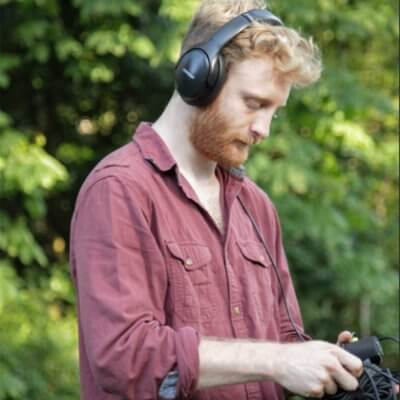With new technologies revolutionizing data collection, wildlife researchers are becoming increasingly able to collect data at much higher volumes than ever before. Now we are facing the challenges of putting this information to use, bringing the science of big data into the conservation arena. With the help of machine learning tools, this area holds immense potential for conservation practices. The applications range from online trafficking alerts to species-specific early warning systems to efficient movement and biodiversity monitoring and beyond.
However, the process of building effective machine learning tools depends upon large amounts of standardized training data, and conservationists currently lack an established system for standardization. How to best develop such a system and incentivize data sharing are questions at the forefront of this work. There are currently multiple AI-based conservation initiatives, including Wildlife Insights and WildBook, that are pioneering applications on this front.
This group is the perfect place to ask all your AI-related questions, no matter your skill level or previous familiarity! You'll find resources, meet other members with similar questions and experts who can answer them, and engage in exciting collaborative opportunities together.
Just getting started with AI in conservation? Check out our introduction tutorial, How Do I Train My First Machine Learning Model? with Daniel Situnayake, and our Virtual Meetup on Big Data. If you're coming from the more technical side of AI/ML, Sara Beery runs an AI for Conservation slack channel that might be of interest. Message her for an invite.
Header Image: Dr Claire Burke / @CBurkeSci

Explore the Basics: AI
Understanding the possibilities for incorporating new technology into your work can feel overwhelming. With so many tools available, so many resources to keep up with, and so many innovative projects happening around the world and in our community, it's easy to lose sight of how and why these new technologies matter, and how they can be practically applied to your projects.
Machine learning has huge potential in conservation tech, and its applications are growing every day! But the tradeoff of that potential is a big learning curve - or so it seems to those starting out with this powerful tool!
To help you explore the potential of AI (and prepare for some of our upcoming AI-themed events!), we've compiled simple, key resources, conversations, and videos to highlight the possibilities:
Three Resources for Beginners:
- Everything I know about Machine Learning and Camera Traps, Dan Morris | Resource library, camera traps, machine learning
- Using Computer Vision to Protect Endangered Species, Kasim Rafiq | Machine learning, data analysis, big cats
- Resource: WildID | WildID
Three Forum Threads for Beginners:
- I made an open-source tool to help you sort camera trap images | Petar Gyurov, Camera Traps
- Batch / Automated Cloud Processing | Chris Nicolas, Acoustic Monitoring
- Looking for help with camera trapping for Jaguars: Software for species ID and database building | Carmina Gutierrez, AI for Conservation
Three Tutorials for Beginners:
- How do I get started using machine learning for my camera traps? | Sara Beery, Tech Tutors
- How do I train my first machine learning model? | Daniel Situnayake, Tech Tutors
- Big Data in Conservation | Dave Thau, Dan Morris, Sarah Davidson, Virtual Meetups
Want to know more about AI, or have your specific machine learning questions answered by experts in the WILDLABS community? Make sure you join the conversation in our AI for Conservation group!
- 0 Resources
- 0 Discussions
- 8 Groups
Allen Institute for AI
Communications for EarthRanger and Skylight



- 8 Resources
- 5 Discussions
- 10 Groups
- 0 Resources
- 0 Discussions
- 6 Groups
TerrOïko
PhD Student in statistical ecology
- 0 Resources
- 0 Discussions
- 7 Groups
TerrOïko
I am an ecological data engineer at Terroïko, where I work on OCAPI, a platform for semi-automatic camtrap data annotation, biodiversity data interoperability and biodiversity indicators.


- 0 Resources
- 10 Discussions
- 6 Groups
TerrOïko
R&D Engineer
- 0 Resources
- 0 Discussions
- 6 Groups
Polytechnic University of Catalonia (UPC)
- 0 Resources
- 0 Discussions
- 1 Groups
- @catwasp
- | She/her
- 0 Resources
- 0 Discussions
- 19 Groups
- 0 Resources
- 0 Discussions
- 4 Groups
- @devizeskayak
- | he/him
- 0 Resources
- 0 Discussions
- 1 Groups
- @IsobelAshbey
- | She/her/hers
Running a Tech for Good initiative at Cambridge Consultants, looking for organisations who need help developing new technology for conservation


- 1 Resources
- 8 Discussions
- 5 Groups
- @cnaumu
- | He/Him
- 0 Resources
- 0 Discussions
- 1 Groups
NASA and IBM have teamed up to create an AI Foundation Model for Earth Observations, using large-scale satellite and remote sensing data, including the Harmonized Landsat and Sentinel-2 (HLS) data.
28 March 2024
Article
You’re invited to the WILDLABS Variety Hour, a monthly event that connects you to conservation tech's most exciting projects, research, and ideas. We can't wait to bring you a whole new season of speakers and...
22 March 2024
Join our multi-national team at the AI for Biodiversity Change Global Climate Center! We're hiring a Research Data Manager & Tech Coordinator at Ohio State. Support cutting-edge research on climate change &...
15 March 2024
Introducing The Freshwater Sounds Archive, a global database of sounds produced by freshwater species. Submit your species-specific or unidentified sounds to the archive now and receive recognition for your...
15 March 2024
EcoAssist has now incorporated the Deepfaune v1.1 species identification model for camera trap images, capable of recognizing 26 European species. The model is developed by Deepfaune initiative. More information is...
12 March 2024
Catch up on the conservation tech discussions and events that happened during World Wildlife Day 2024!
7 March 2024
EcoAssist introduces a free African species identification model for camera trap images, capable of recognising 30 species.
5 March 2024
Join us to help prevent biodiversity loss! Understory is hiring a postdoc to lead R&D Development on generalizing Computer Vision models for vegetation identification across space/time/phenotypes.
29 February 2024
Join the Luxembourg Institute of Science and Technology (LIST) in pioneering environmental and ecological monitoring! 🌍💡 As part of ERIN’s Observatory for Climate, Environment, and Biodiversity (OCEB), you'll be at the...
26 February 2024
SNTech are recruiting for 3 roles to assist us to develop computer vision pipelines for underwater monitoring
15 February 2024
We invite applications for the third Computer Vision for Ecology (CV4E) workshop, a three-week hands-on intensive course in CV targeted at graduate students, postdocs, early faculty, and junior researchers in Ecology...
12 February 2024
The primary focus of the research is to explore how red deer movements, space use, habitat selection and foraging behaviour change during the wolf recolonization process.
10 February 2024
June 2025
event
July 2025
October 2025
event
event
September 2022
August 2022
73 Products
Recently updated products
16 Products
Recently updated products
| Description | Activity | Replies | Groups | Updated |
|---|---|---|---|---|
| MIT has this Moo Deng-based fun challenge! More seriously it relates to AI and human-nature interaction. I imagine people on Wildlabs would... |
|
AI for Conservation | 1 day ago | |
| Hi Ethan, It's indeed a competitive area. My advice for you (and anybody else seeking a PhD supervisor)...Do background research on each individual potential supervisor and always... |
|
Early Career, AI for Conservation, Animal Movement, Climate Change | 4 days 9 hours ago | |
| Hi Nick,At Wildlife.ai, from the other side of the world, we would be happy to chat with you. PM if interested Victor |
|
AI for Conservation, Emerging Tech | 2 days 11 hours ago | |
| Hi everyone,What should we share or demo about Software Quality Assurance? Alex Saunders and I, the two Software QA people at Wildlife Protection Solutions (WPS) are going to... |
|
Software Development, AI for Conservation, Open Source Solutions | 4 days 4 hours ago | |
| My name is Frank Short and I am a PhD Candidate at Boston University in Biological Anthropology. I am currently doing fieldwork in Indonesia using machine-learning powered passive... |
|
Acoustics, AI for Conservation, Animal Movement, Data management and processing tools, Early Career, Emerging Tech, Ethics of Conservation Tech, Protected Area Management Tools, Software Development | 2 weeks 1 day ago | |
| This looks like a great application, thank you! I wonder if they are planning to run this study in future years. |
|
AI for Conservation | 2 weeks 3 days ago | |
|
|
Latin America Community, Acoustics, AI for Conservation, Camera Traps, Drones, Early Career | 2 weeks 6 days ago | ||
| @LukeD, I am looping in @Kamalama997 from the TRAPPER team who is working on porting MegaDetector and other models to RPi with the AI HAT+. Kamil will have more specific questions. |
|
AI for Conservation, Camera Traps | 3 weeks ago | |
| Super happy to finally have Animal Detect ready for people to use. We are open for any feedback and hope to bring more convenient tools :) |
|
AI for Conservation | 3 weeks ago | |
| Hi Ștefan! In my current case, I am trying to detect and count Arctic fox pups. Unfortunately, Arctic fox does not seem to be included in the training data of SpeciesNet but... |
+16
|
AI for Conservation, Camera Traps | 3 weeks 1 day ago | |
| Interesting. Thanks for the explanation. Nice to hear your passion showing through. |
|
AI for Conservation, Camera Traps, Data management and processing tools, Open Source Solutions, Software Development | 3 weeks 3 days ago | |
| 📸 Do you use camera traps in your work? Take part in our survey!Hi everyone! I’m currently a final-year engineering... |
|
Camera Traps, AI for Conservation, Data management and processing tools, Open Source Solutions, Software Development | 3 weeks 4 days ago |





































